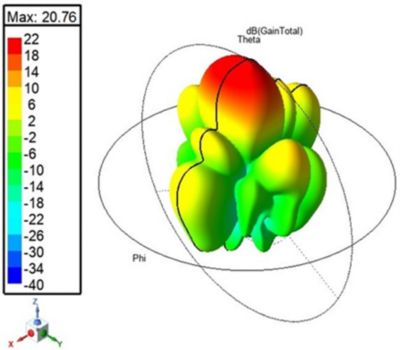Case Study
-
-
Accédez au logiciel étudiant gratuit
Ansys donne les moyens à la prochaine génération d'ingénieurs
Les étudiants ont accès gratuitement à un logiciel de simulation de classe mondiale.
-
Connectez-vous avec Ansys maintenant !
Concevez votre avenir
Connectez-vous à Ansys pour découvrir comment la simulation peut alimenter votre prochaine percée.
Pays et régions
Espace client
Support
Communautés partenaires
Contacter le service commercial
Pour les États-Unis et le Canada
S'inscrire
Essais gratuits
Produits & Services
Apprendre
À propos d'Ansys
Back
Produits & Services
Back
Apprendre
Ansys donne les moyens à la prochaine génération d'ingénieurs
Les étudiants ont accès gratuitement à un logiciel de simulation de classe mondiale.
Back
À propos d'Ansys
Concevez votre avenir
Connectez-vous à Ansys pour découvrir comment la simulation peut alimenter votre prochaine percée.
Espace client
Support
Communautés partenaires
Contacter le service commercial
Pour les États-Unis et le Canada
S'inscrire
Essais gratuits
“The modeling accuracy of Ansys software has been instrumental for developing successful antennas at first run. Saving development cycles, precious time and expenses is of paramount importance for everyone and especially for small, innovative companies such as Argo. Furthermore, Ansys’ Startup Program has been critical in enabling Argo to carry out its development objectives within a tight budget and deliver high-quality antenna solutions that respond to the needs of its customers and partners.”
— Manolis Frantzeskakis, CEO, Argo Semiconductors SA
The 5G landscape is evolving. With new frequencies becoming available in the 5G Advanced network, antennas must be capable of accessing the 6GHz band and compatible with newly launched private networks and standalone stations. Argo Semiconductors created an ultra-slim antenna designed for this era of 5G. But the antenna’s thickness posed bandwidth challenges and the higher integration of radio components implied adverse thermal effects on the antenna.
Challenges
5G networks need many radios and bigger antenna arrays, which can compromise signal integrity. Moreover, sub6GHz 5G antennas require 3D-structured elements, increasing the cost of development and deployment. A promising solution includes the redesign of the antenna arrays so they can be manufactured by conventional printed circuit board (PCB) facilities, while integrating and optimizing the design processes of antenna arrays and splitters/combiners for a system of components that work together.

Argo Semiconductor’s 4x8x2 antenna array
Engineering Solutions
- HFSS performed exceptionally with the large size of the arrays.
- Various parametric studies and optimization analyses were performed with HFSS to efficiently meet robust design specifications while enabling Ansys HPC for parallel solution distribution for scalability.
- With HFSS, ArgoSemi capitalized on the repeating nature of the antenna array structure to develop a monolithic 2D-printed antenna.
- Array designs were simulated as finite arrays with all edge effects successfully accounted for in both S-parameters and radiation patterns.
- Co-design of antenna arrays and integrated multi-element splitters/combiners or phase shifters were co-optimized and simulated and validated with prototype characterizations, in agreement with full-wave simulations.

Radiation diagram for 4x8 antenna array
Benefits
- Argo estimates that it was able to cut the development time by about 30% compared to competitive tools.
- The 2D-printed antenna can be manufactured with the usual PCB process instead of custom manufacturing processes that are needed for existing 3D antenna structures.
- HFSS can cover a wider range of frequencies for different bands.
Commençons
Si vous êtes confronté à des défis d'ingénierie, notre équipe est là pour vous aider. Forts de notre expérience et de notre engagement en faveur de l'innovation, nous vous invitons à nous contacter. Collaborons pour transformer vos obstacles techniques en opportunités de croissance et de réussite. Contactez-nous dès aujourd'hui pour entamer la conversation.